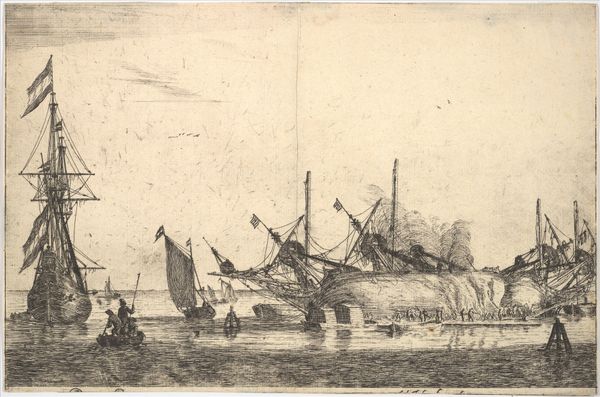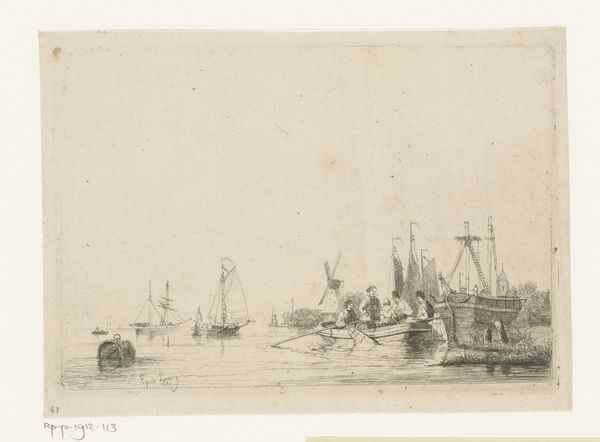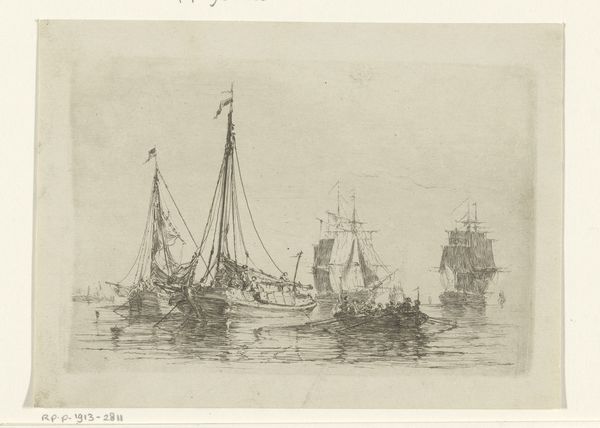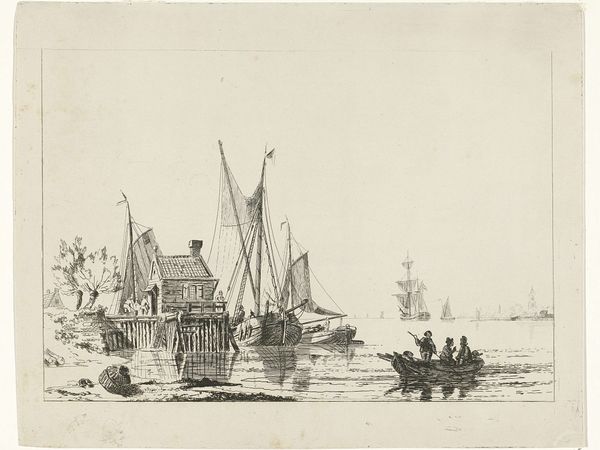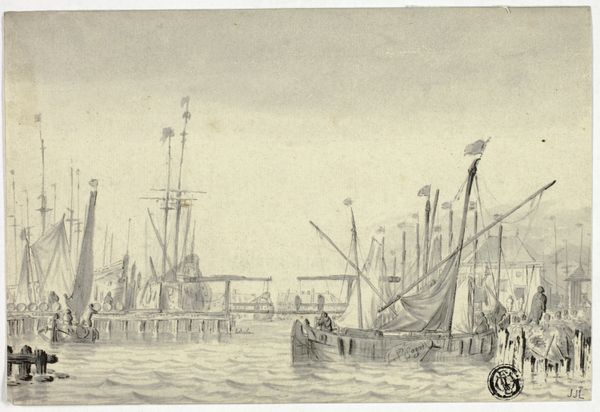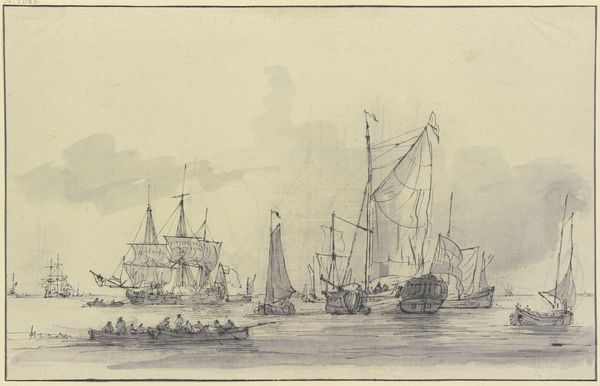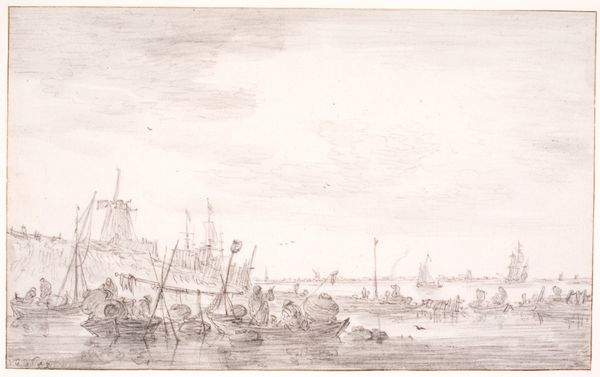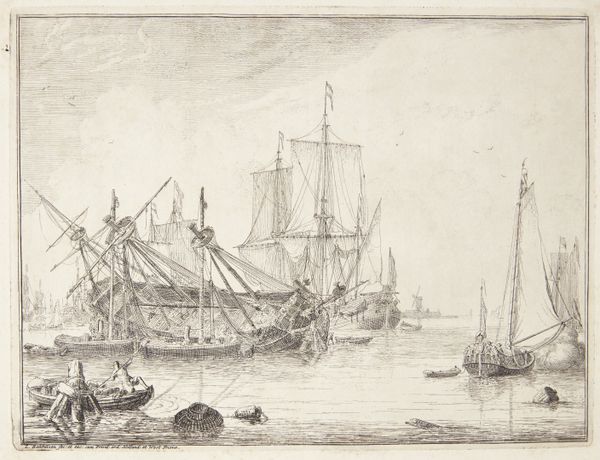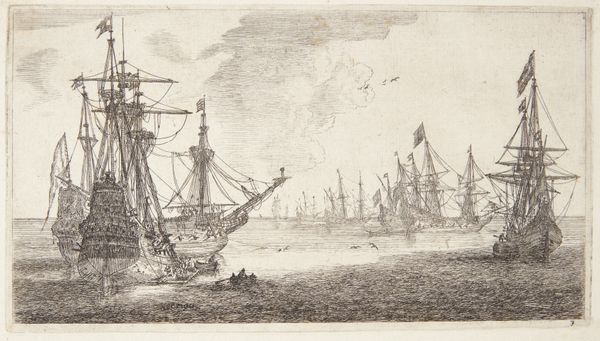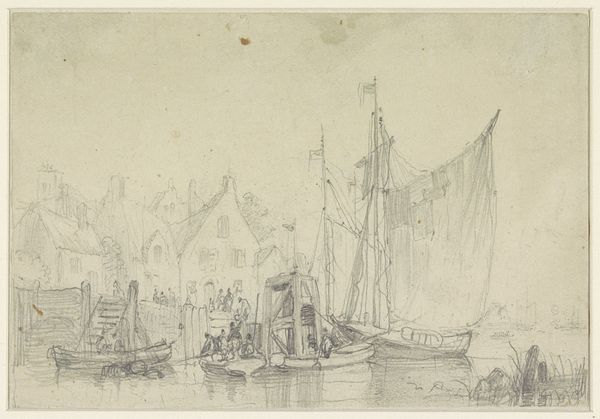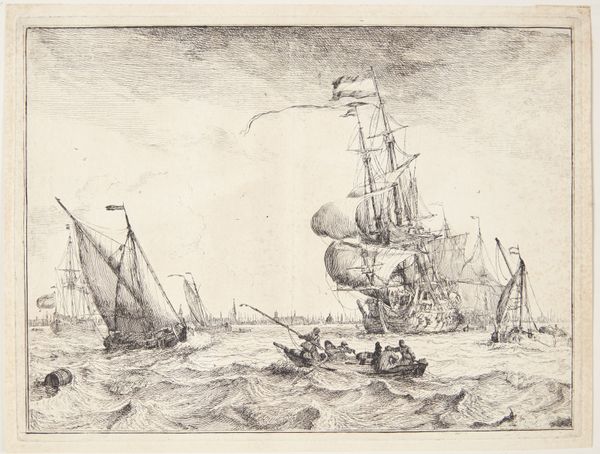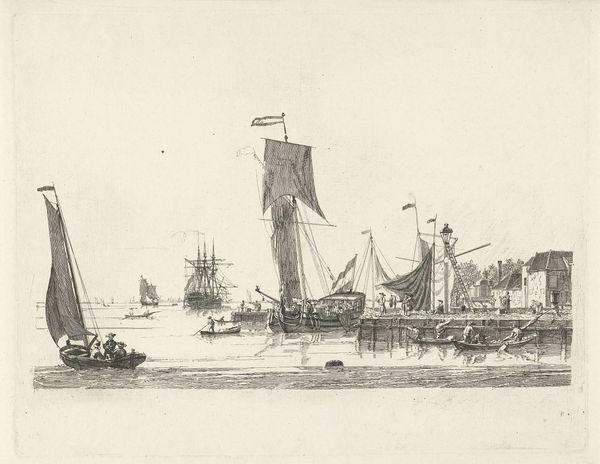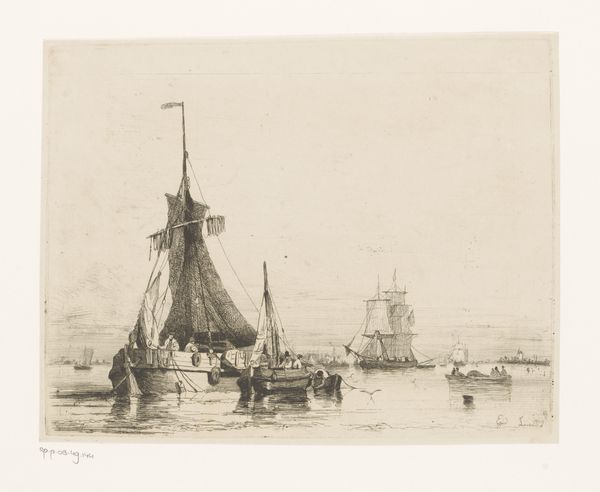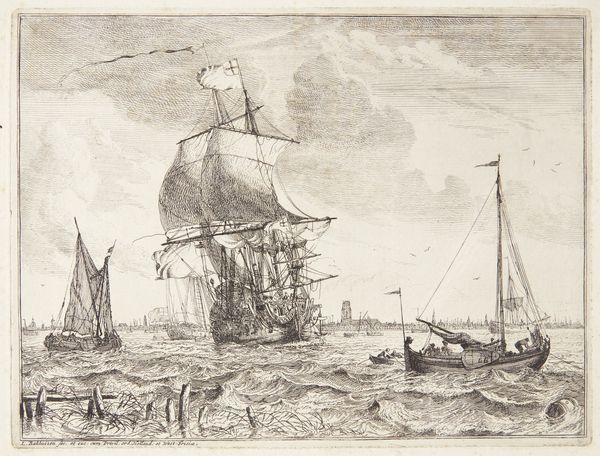
print, etching
#
dutch-golden-age
# print
#
etching
#
landscape
#
cityscape
Dimensions: 190 mm (height) x 293 mm (width) (bladmaal)
Editor: Here we have "To kôlede skibe," or "Two Keel-Hauled Ships," an etching by Reinier Nooms, dating sometime between 1623 and 1664. It’s a chaotic scene, with several ships and a small boat filled with figures. One ship appears to be capsizing. What catches your eye when you look at this print? Curator: The keeling of a ship wasn't just an image; it was a ritual. It was a violent act meted out on the water, using the water itself. Think of the psychological implications of submerging a body under the waves – a symbolic death and potential rebirth, dictated by the harsh justice of the sea. Editor: Rebirth? It seems brutal. Curator: The ship itself carries immense symbolic weight, doesn’t it? It represents not only trade and exploration, but also the fragility of human endeavor against the power of nature, or even the subconscious. Are these ships simply being punished or cleansed? Consider also the little boat. Are they there for rescue or enforcement? Editor: I hadn't considered the double meaning. So the ship being keelhauled represents both punishment and…spiritual cleansing? Curator: Potentially. This was the Dutch Golden Age. Consider the relationship of humans to mercantile exploration and also how maritime power defined Dutch identity. These images weren't merely documentation. Nooms was a sailor himself, after all. Editor: That context is fascinating! Now the scene feels heavier, fraught with meaning. Thanks for showing me how the cultural memory influences its interpretation. Curator: And thanks to you, I’m rethinking what “maritime power” meant, if rituals of cleansing were needed alongside feats of trade and naval might.
Comments
No comments
Be the first to comment and join the conversation on the ultimate creative platform.
